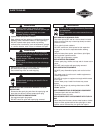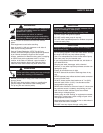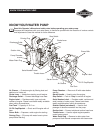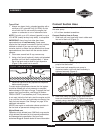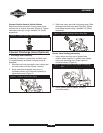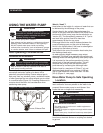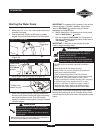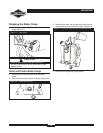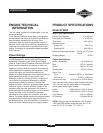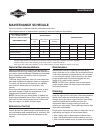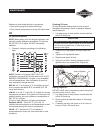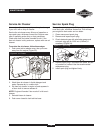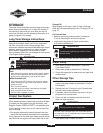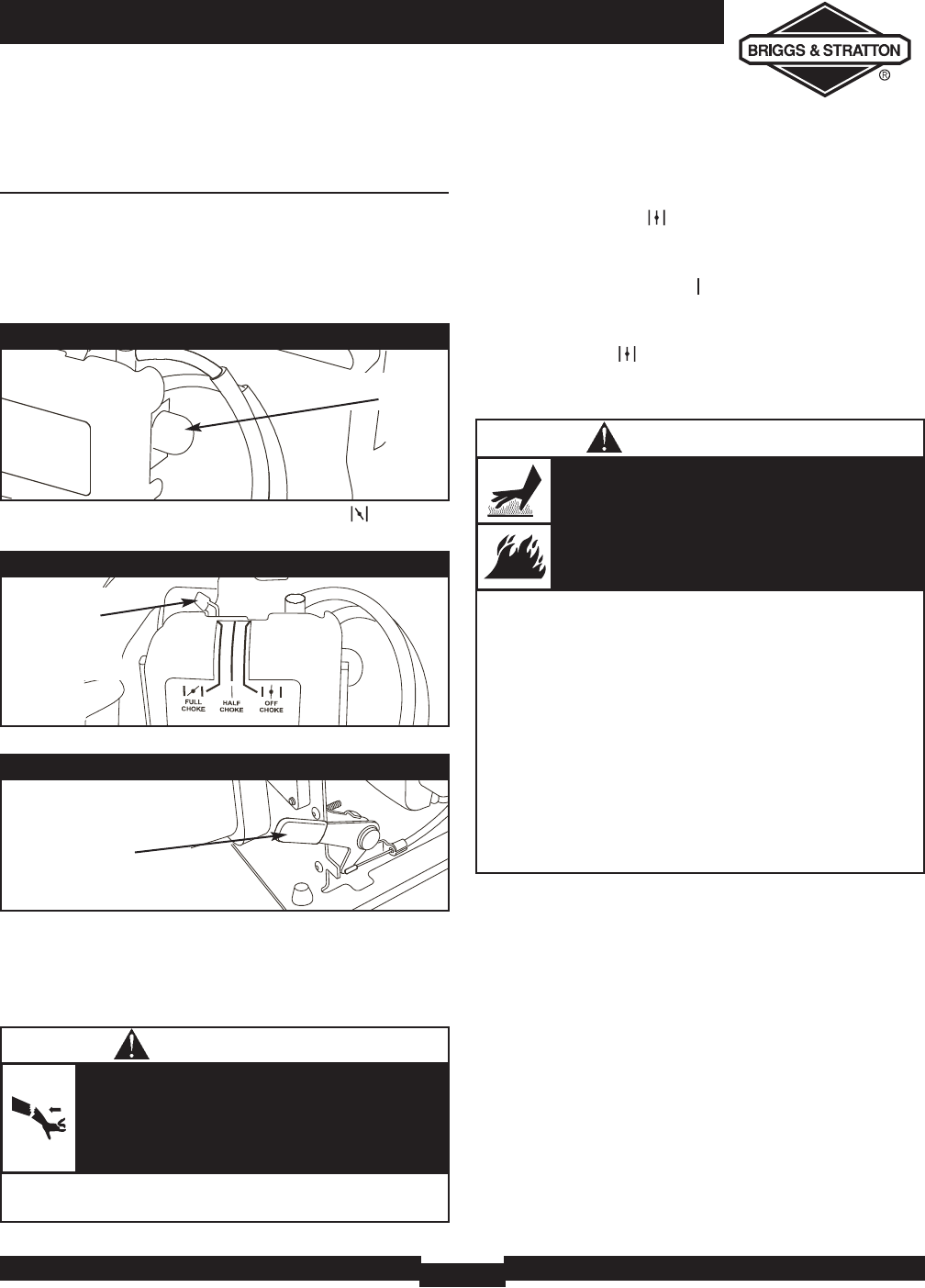
11
OPERATION
Starting the Water Pump
Use the following start instructions:
1. Make sure unit is on a flat, level surface and pump
chamber is primed.
2. Push primer bulb (Figure 14) 15 times for a new
engine. Push primer bulb 8 times for all future starts.
3. Move red choke lever to “Full Choke” ( ) position
(Figure 15).
4. Move throttle lever all the way up (Figure 16).
5. While firmly grasping pump carrying handle with
left hand, pull starter handle with right hand slowly
until slight resistance is felt. Then pull handle
rapidly to overcome compression, prevent kickback
and start engine.
IMPORTANT: If excessive fuel is present in the air/fuel
mixture causing a “flooded” condition, move choke
lever to “Off Choke” ( ) position and pull handle
repeatedly until engine starts.
6. Wait a maximum of 10 seconds, then move choke
lever to “Half Choke” ( ) position.
7. Run the engine at “Half Choke” for 20 seconds or
until unit accelerates smoothly. Move choke lever to
“Off Choke” ( ) position.
IMPORTANT: It may take a few minutes for water
pump to begin pumping water.
Pump output is controlled by adjusting engine speed.
Moving the throttle lever up will increase pump output,
and moving the throttle lever down will decrease pump
output.
• When starting engine, pull cord slowly until resistance is
felt and then pull rapidly to avoid kickback.
Rapid retraction of starter cord (kickback)
will pull hand and arm toward engine faster
than you can let go.
Broken bones, fractures, bruises or sprains
could result.
WARNING
Figure 16 — Throttle Lever
Throttle Lever
shown fully up
Figure 14 — Primer Bulb
Figure 15 — Choke Lever
Choke Lever
shown in
“Full Choke”
position
Primer Bulb
• DO NOT touch hot surfaces and avoid hot exhaust
gases.
• Allow equipment to cool before touching.
• Keep at least 5 ft. (152 cm) clearance on all sides of
water pump including overhead.
• Code of Federal Regulation (CFR) Title 36 Parks,
Forests, and Public Property require equipment powered
by an internal combustion engine to have a spark
arrester, maintained in effective working order, complying
to USDA Forest service standard 5100-1C or later
revision. In the State of California a spark arrester is
required under section 4442 of the California Public
resources code. Other states may have similar laws.
Running engines produce heat. Temperature
of muffler and nearby areas can reach or
exceed 150°F (65°C).
Severe burns can occur on contact.
Exhaust heat/gases can ignite combustibles,
structures or damage fuel tank causing a fire.
WARNING



